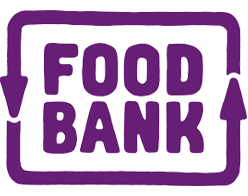Monthly income turns to charity greed
Posted by: mermaid
22nd Oct 2009 11:50pm
This was met with much distaste amongst the large pool of volunteers, who questioned why? The manager shared the same view and set off to identify the need vs greed syndrome and this is what we learned.......
more than $210 billion of institutionalised ''charity'' is now part of Australia's society and is embedded in the economy rather than being an optional extra. Old-fashioned charity is just $9 billion, 4 per cent of the total or less than 3 per cent if we acknowledge governments' financial support to charities.
There are approximately 10,400 charities in Australia with almost 12,000 outlets or branches.
120,000 staff are employees vs tens of thousands of volunteers; this figure does not include volunteers who work for schools, clubs and associations. Total wages are about $3.9 billion.
Salvation Army (eastern and southern divisions only) revenue approx $650 million, smaller average less than $800,000 per year (a extraordinary figure).
Compare these figures to an average business employing staff, with a revenue of $3.8 million - or approx five times the average charity.
Reality is charities are a business and these figures are Australian, given the number of charity organisations in Australia also exist worldwide the math just does not add up.
When presenting these figures to senior management, the manager was told rising inflation restricted the charity from performing.
The result, the manager and 3/4's of the pooled volunteers left and within 2 years the charity have employed 4 managers. The days of charity truly have gone!
What are your thoughts?
sherri
- 22nd Nov 2011 12:50pm
Yes, I was aware of that - though not the statistics...they are worse even than I feared!
In my early days in the sector we noted the 'corporatisation' of certain charities and resolved never to go down that path.This resolve lasted till there was a change of CEO and with it a change of 'culture' to that which you are describing. We have also seen a huge turn-over of the original staff - many of us with stress related issues. It is not an easy area to work in, but much easier when you share the same values as your organisation.
I also think that these organisations are FULL of those who genuinely want to make a difference - but that organisationally they have lost the plot a little bit, and have fallen into the trap of self-perpetuation. (And that there remains many stories - particularly -old- stories where individuals from such organisations have made an important difference for people)
But my personal beleif/hope is that we (Australians) are not going to put up with this distortion of what charity is about for much longer and will 'vote' with our wallets and our feet. - and that we will instead choose to support charities who don't put self perpetuation and the making of money ahead of service to people.
Help Caféstudy members by responding to their questions, or ask your own in Café Chat, and you will get the chance of earning extra rewards. Caféstudy will match these and donate equally to our two chosen Australian charities.



